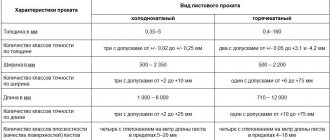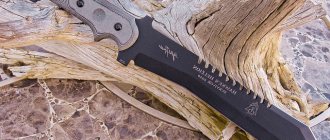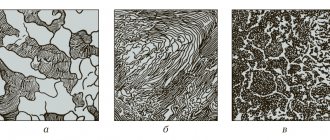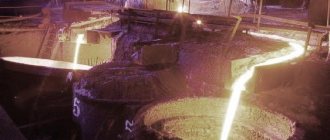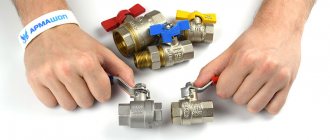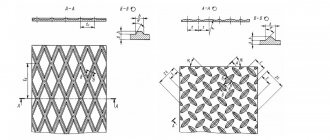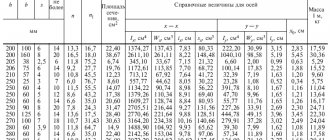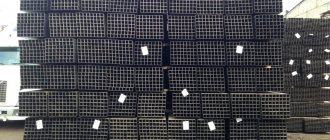Information on steel alloying elements
Each individual element imparts certain specific properties to steel, depending on its proportion. If several elements are present, the effect may be increased. But there are variants of alloys in which individual elements, with respect to a certain behavior, do not exert their influence in one direction, but can counteract each other. The presence of alloying elements in steel only creates a prerequisite for the desired properties; they can only be achieved through processing and heat treatment. Listed below are the main types of influence that alloying and related elements have on steel.
Aluminum (Al) Melting point 658° C
This is the most powerful, very often used deoxidizing and, in addition, denitrating agent; Thanks to this, it has a very beneficial effect on insensitivity to aging. In small additions it supports the formation of fine grains. Since Al forms high-hardness nitrides with nitrogen, it is the predominant alloying element in nitrided steel.
It improves dross resistance and is therefore often added to ferritic heat-resistant steel. In unalloyed carbon steel, it is possible to increase resistance to scale by using “alitization” (adding Al to the surface). Al greatly narrows the zone. Due to the strong increase in coercivity, aluminum is an alloying element in hard magnetic alloys of iron, nickel, cobalt, and aluminum.
Lead (Pb) Melting point 327.4° C
Added to free-cut steel in a content of approx. 0.2-0.5%, since its extremely fine suspension distribution produces short chips and a clean cutting surface. The indicated lead contents have virtually no effect on the mechanical properties of steel.
Boron (B) Melting point 2300° C
Because boron has a large effective cross-section for absorbing neutrons, it is alloyed in steel for regulators and screens in nuclear power plants.
Austenitic 18/8 CrNi steel can, with the help of boron, through precipitation hardening, obtain a higher tensile yield strength and strength, which reduces the anti-corrosion resistance. Boron-induced precipitation improves the strength of high-temperature austenitic steel types in the elevated temperature zone.
In construction steel, this element improves deep carburization and thus causes an increase in the grain strength of the carburized steel. Expect a reduction in welding work in boron alloyed steel.
Chromium (Cr) Melting point 1857° C
Cr makes steel hardenable in oil and air. By lowering the critical cooling rate required for martensite formation, it increases hardenability and thus improves the ability to improve quality. However, the toughness is reduced, but the elongation is reduced only slightly. Weldability decreases in pure chrome steel as the chromium content increases. The tensile strength of steel increases by 80-100 n/mm for every 1% Cr. Cr is a carbide former. Its carbides improve cutting tool resistance and wear resistance.
Thermal resistance and resistance to pressure hydrogen are increased by chromium. While increasing the chromium content improves scale resistance, a minimum chromium content of approx. 13%, which must be dissolved in the matrix. The element cuts off the zone and thus expands the ferritic zone; stabilizes austenite in austenitic Cr-Mn- or Cr-Ni steel. Thermal conductivity and electrical conductivity decrease. Thermal expansion is reduced (alloys for soldering into glass).
With a simultaneously higher carbon content, a chromium content of up to 3% increases the residual magnetism and coercivity.
Carbon (C) Melting point 3540° C
Carbon is the most important and influential alloying element in steel. Along with carbon, every unalloyed steel contains silicon, manganese, phosphorus and sulfur, which are added unintentionally during manufacturing.
The addition of further alloying elements to achieve special effects, as well as a deliberate increase in the content of manganese and silicon, causes the formation of alloy steel.
With an increase in carbon content, the strength and hardness of steel increases, on the contrary, its expansion, ductility and workability decrease (with cutting tools). Carbon has virtually no effect on anti-corrosion resistance to water, acids and hot gases.
Copper (Cu) Melting point 1084° C
Copper is added to only a small number of grades of steel, since it is enriched under the scale layer and, due to penetration into the core, causes greater insensitivity of the surface during thermal deformation processes, so it is considered partly as a pest for steel. The tensile yield strength and the tensile yield strength to strength ratio are increased. above 0.30% may cause precipitation hardening. Hardenability improves. Copper does not affect welding work. In unalloyed and lightly alloyed steels, copper provides a significant improvement in weather resistance.
Manganese (Mn) Melting point 1221° C
Manganese deoxidizes. It binds sulfur as manganese sulfides and thus reduces the adverse effects of iron sulfide. This is of particular importance with automatic steel: the risk of red brittleness is reduced. Manganese greatly reduces the cooling rate and thus increases hardenability.
The tensile yield strength, as well as strength due to manganese, increase; in addition, manganese has a beneficial effect on ductility and weldability and greatly increases the depth of hardenability. above 4% also causes the formation of a brittle martensitic structure during slow cooling, so that the alloying zone is almost not used.
Steels with a manganese content higher than 12% are austenitic with a simultaneous high carbon content, because manganese significantly expands the zone. Such types of steel receive very high cold hardening when the surface is subjected to impact loading, while the core remains ductile; Therefore, they have high wear resistance when subjected to impact.
Alloy copper
It is used in its pure form and as part of copper alloys, which have a wide variety depending on the ratio of the main and alloying elements: brass, bronze, cupronickel, silver and others.
Pure brass, an alloy with zinc, is not alloyed. If it contains alloying non-ferrous metals in a certain amount, it is considered multicomponent. Bronzes are alloys with other metal components; they can be tin or not containing tin; they are alloyed in all cases. Their quality is improved using Mn, Fe, Zn, Ni, Sn, Pb, Be, Al, P, Si.
The silicon content in copper compounds increases their corrosion resistance, strength and elasticity; tin and lead - determine anti-friction qualities and positive characteristics regarding machinability; nickel and manganese are components of so-called wrought alloys, which also have a positive effect on corrosion resistance; iron improves mechanical properties, and zinc improves technological properties.
They are used in electrical engineering as the main raw material for the manufacture of various wires, material for the manufacture of critical parts for chemical equipment, in mechanical engineering and instrument making, in pipelines and heat exchangers.
Influence of alloying elements on the heat resistance of austenitic steels
In this article we will talk about the effect of some alloying elements on the heat resistance of steels. In the warehouse, such steels include rolled grade 20x23n18
Titan influence
In heat-resistant steels and alloys with carbide hardening, titanium introduced in small quantities (0.1-0.3%) improves their long-term strength. When introduced in large quantities into complex alloyed heat-resistant steels with carbon, titanium reduces the hardness and strength characteristics and increases the plastic properties at room and high temperatures. Changes in mechanical properties are due to the fact that titanium binds carbon into stable carbides, which do not take part in the processes of dispersion hardening.
Therefore, the process of formation of chromium and vanadium carbides in the presence of titanium at a Ti:C ratio > 5 is greatly weakened and the steel becomes less prone to strengthening due to dispersion hardening. In heat-resistant alloys with intermetallic hardening based on a y-solid solution, titanium is an alloying element that greatly increases the heat-resistant properties due to dispersion hardening processes associated with the formation of a y'-phase of the Ni3 (TiAl) type.
The temperature-variable solubility of titanium in y-solid solutions depends on the content of chromium and other alloying elements and determines the kinetics of formation of the y'-phase during aging of an alloy pre-hardened in a solid solution.
Effect of chromium
The introduction of chromium into heat-resistant steels and alloys increases their resistance to oxidation at high temperatures, and the higher its content in the alloys, the greater the resistance. In terms of increasing heat-resistant properties, chromium also has a positive effect, but it is less effective than molybdenum and vanadium. The introduction of chromium into ferritic steels increases the activation energy of iron self-diffusion and increases the recrystallization temperature, creep resistance and long-term strength. It also helps to preserve the lattice distortions of deformed austenite during tempering.
However, the effect of chromium on increasing the heat-resistant properties of ferritic steels depends on its content and alloying with other elements and is not necessarily proportional to its amount. In austenitic steels, chromium increases the binding energy of the atoms of the crystal lattice of the y-solid solution, and somewhat increases the heat-resistant characteristics and the recrystallization temperature of alloyed austenite. In Fig. Figure 1 shows the effect of chromium on the change in mechanical properties and long-term strength of complex alloy steel with carbide strengthening. The maximum heat resistance in this system refers to 9-15% Cr.
Chromium forms a series of carbides with carbon, which, as a result of hardening and aging, are released in a highly dispersed state in a solid solution, strengthening austenitic steels. However, due to the high tendency of chromium carbides to coagulate, this hardening is easily removed with increasing test temperature. Chromium carbides have a relatively low thermal resistance, and therefore increasing the heat resistance of austenitic steels through the formation of only such carbides is not so effective.
In complex alloys based on a nickel base with titanium or aluminum, the chromium additive changes the solubility of the u-phase in the solid solution and thereby imparts to the alloys the ability to dispersion hardening at a lower titanium content.
chromium,% (by weight)
Rice. 1 The influence of chromium on the change in the mechanical properties of steel with 0.6% C; 20% Ni; 6% MP; 2% V; 1.40%Mo; 1.5% Nb
With an excessive increase in chromium content and the formation of a ferrite component in complex alloyed heat-resistant austenitic steels of various compositions, a sharp drop in heat resistance is observed.
Effect of molybdenum
The introduction of molybdenum into ferritic, austenitic steels and nickel alloys increases the recrystallization temperature of y-solid solutions and inhibits their softening. The activation energy for self-diffusion of iron or chromium increases with increasing amount of molybdenum added to the alloy. For most alloys, alloying with molybdenum, along with increasing heat resistance, increases ductility during short-term and long-term tests.
Molybdenum has a significantly greater effect on the heat resistance of dispersion-hardening alloys with carbide or intermetallic strengthening. The effectiveness of molybdenum on the heat-resistant properties of complex alloy steels and alloys increases when it is introduced into the alloy simultaneously with other elements, including elements that cause precipitation hardening processes.
In this case, molybdenum inhibits the softening of the alloy at higher temperatures, since it impedes diffusion exchange, recrystallization and coagulation of dispersed particles. Therefore, the hardness decrease curve on the dispersion hardening diagrams beyond the maximum for alloys with molybdenum is higher than for alloys without molybdenum. Molybdenum slightly shifts the maximum hardness of precipitation hardening towards higher temperatures, having little effect on the absolute increase in hardness, as well as on the mechanical properties at room temperature.
In nickel-based heat-resistant alloys and intermetallic-hardened iron-based alloys, molybdenum also has a positive effect by increasing heat resistance. In a number of alloys, molybdenum forms Laves type phases (Fe2Mo), contributing to an even greater increase in heat resistance due to dispersion strengthening processes
Source: Novstal LLC
: production of seamless stainless steel pipes
Source: https://ooo-novstal.ru/spravka/vliyanie_legiruyuwih_elemetov.html
Characteristics of alloy steels
Alloy steel is steel that, in addition to the usual impurities, is also equipped with additional additives that are necessary for it to meet certain chemical and physical requirements.
Ordinary steel consists of iron, carbon and impurities, without which it is impossible to imagine this material. Additional substances are added to alloy steel, which are called alloying substances. They are used to ensure that steel has the properties that are necessary in certain situations.
In most cases, the following are added to iron, impurities and carbon as alloying elements: nickel, niobium, chromium, manganese, silicon, vanadium, tungsten, nitrogen, copper, cobalt. It is also not uncommon for such materials to contain substances such as molybdenum and aluminum. In most cases, titanium is added to add strength to the material.
This type of steel has three main categories. The relationship of alloy steel to a particular group is determined by how much steel and impurities it contains, as well as alloy additives.
Types of Alloy Steel
There are three main types of steel with alloying elements:
Low alloy steel.
It is characterized by the fact that it contains about two and a half percent of alloying additional elements.
Medium alloy steel.
This material contains from 2.5 to 10 percent of additional alloying substances.
High alloy steel.
This type includes steel materials, the amount of alloying additives in which exceeds ten percent. The amount of these components in such steel can reach fifty percent.
Purpose of alloy steel
Alloy steel is widely used in modern industry. It has a high level of strength, which allows it to be used to manufacture equipment for cutting and chopping rolled metal of various types.
According to their purpose, alloy steels can be represented by a large number of groups.
The main ones are:
- structural alloy steel,
- tool alloy steel,
- alloy steel with special chemical and physical properties.
The characteristics of alloy steels can be varied. They acquire them due to the ratio of the basic elements. Steels of this type are in any case more durable and resistant to corrosion.
Physical properties and mechanical characteristics of chromium metal and its compounds
Chrome is not a structural material, but is used quite widely due to the fact that it has excellent anti-corrosion properties. Chrome plating protects any other alloy from rust. In addition, alloying steels with chromium gives them the same resistance to corrosion that is characteristic of the metal itself.
So, let's discuss today what are the technical and oxidation characteristics of the chromium material, the main amphoteric, reducing properties and metal production will also be affected. We will also find out what the effect of chromium is on the properties of steel.
